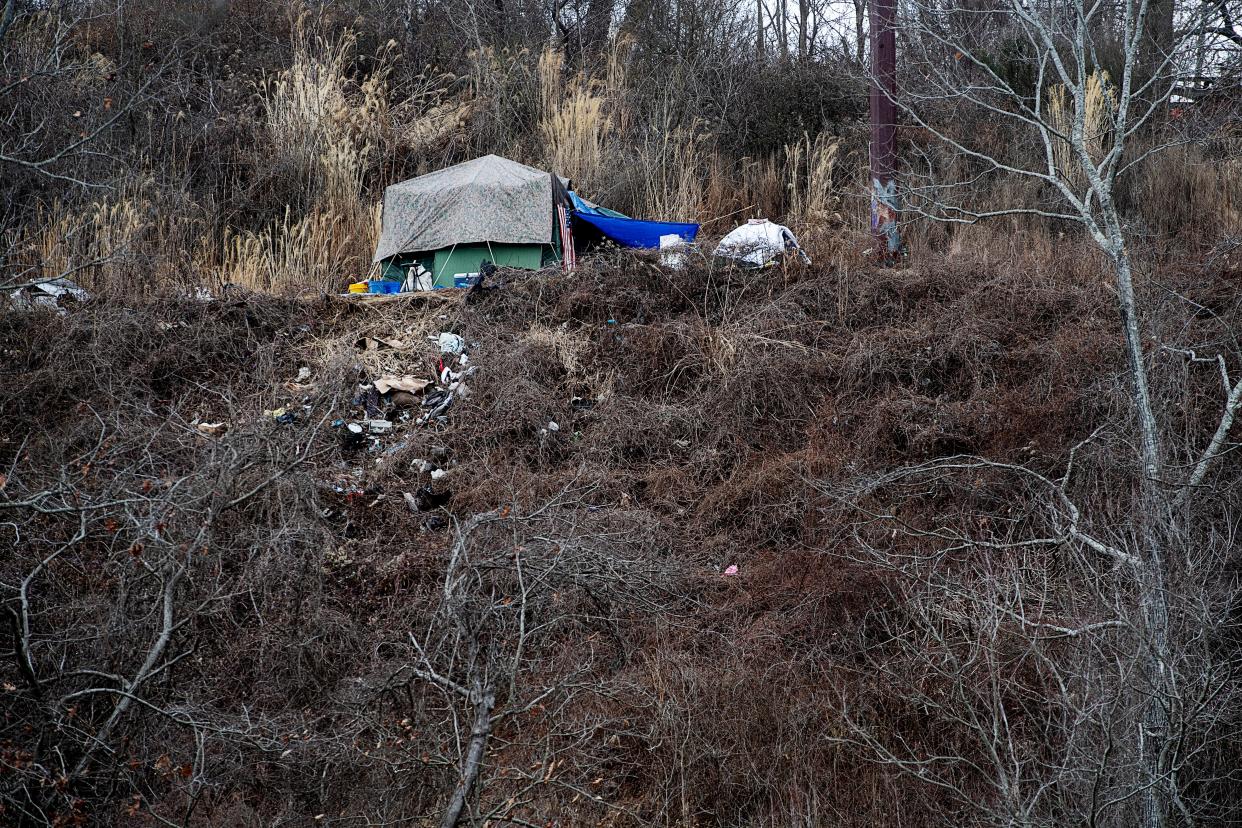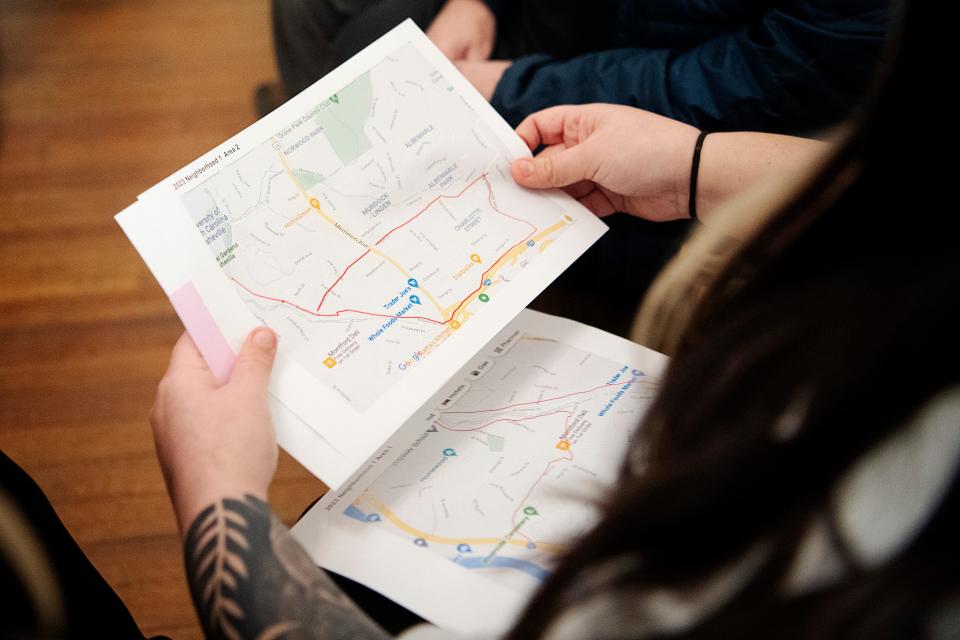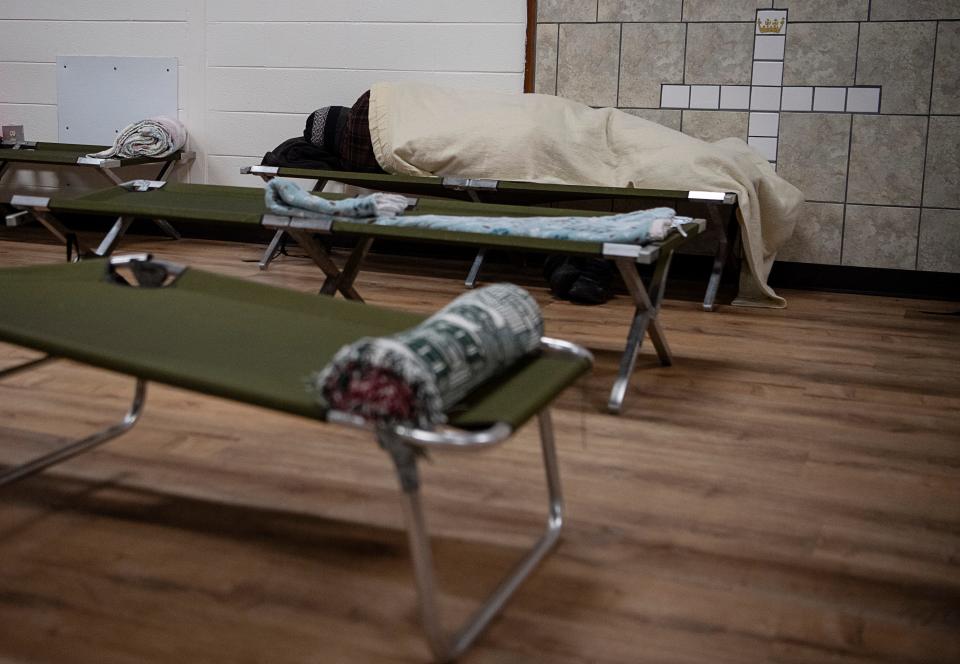Answer Woman: Homelessness demographics in Asheville? Predominately male and white?

ASHEVILLE - Today's burning question is about a the demographics of people experiencing homelessness in our community, and what factors led to a loss of housing. Got a question for Answer Man or Answer Woman? Email Interim Executive Editor Karen Chávez at KChavez@citizentimes.com and your question could appear in an upcoming column.
Question: When I look at the population that are homeless and living on the streets, they seem to be predominantly male and white. Is there any breakdown on the various demographic factors regarding those individuals who are living on the streets? Is there information available on a variety of aggregates including groupings by age, gender, race, drug-related problems, mental health issues, loss of employment and other factors that may contribute to their current situation? Finally, is there any statistics on individuals who are offered help but refuse services that might change their situation?
Answer: This is a timely question, as the latest point in time count was held Jan. 31. The annual count offers a single night census of the area's homeless population and will be the source for much of the demographic and situational information asked about here.
Though data from this year's count won't be available until the spring, there are the numbers from the January 2022 count to fall back on.
When asked if there was other demographic data to reference as well, Emily Ball, the city's homeless services system lead, said "not at this point, unfortunately."
"But as more and more service providers enter data into the Homeless Management Information System, we’ll be able to get a clear, real-time picture of who’s experiencing homelessness throughout the year," Ball told the Citizen Times in January.

More:Answer Woman: Did an NCDOT encampment 'cleanup' off I-40 in Asheville leave a mess behind?
More:Fact checking the Asheville busing myth: Are homeless people being bused into the city?
The Homeless Management Information System, or HMIS, is a local information technology system used to collect client-level data, and data on the provision of housing and services to people experiencing homelessness.
As the Citizen Times has covered lately, the city recently contracted with the Washington, D.C.-based National Alliance to End Homelessness to learn more about ending unsheltered homelessness in Asheville and Buncombe County. The results of the $72,974 contract is a new 54-page report filled with recommendations.
More:Report: How will Asheville end homelessness? See the recommendations from a $73K study
More:Ending homelessness begins with restructuring the Asheville, Buncombe system, says report
Among the 30-plus recommendations is a call for more providers to utilize the HMIS system, and more comprehensively.
Given all of that, there could be more local data available in the coming years.
According to the 2022 data that will be referenced below, 637 people total were found to be homeless, up 21% since 2021, and 232 of them were identified as unsheltered.
All survey data is voluntary.

Who is homeless in Asheville?
Race
White: 73.8%
Black: 19.5%
Asian: 0.5%
American Indian or Alaska Native: 2.5%
Multiple races: 3.8%
Noted in the presentation of the data is that though 6.3% of Buncombe County's population is Black, 19.5% of people experiencing homelessness were identified as Black through the point in time count.
This discrepancy was noted in the Alliance report as well, which said Black, Indigenous and people of color are overrepresented within the population experiencing homelessness both nationally and within the local data.
"We learned from the National Alliance to End Homelessness that across the country, unsheltered populations —who are much more visible than people in shelters or transitional housing — tend to have higher percentages of white people, even though the homeless population as a whole includes a disproportionate number of BIPOC individuals," Ball said. "I expect to see a similar trend locally in our 2023 Point-in-Time count data."
More:5 felony littering cases will go to trial in Asheville; defendants express 'dismay'
More:NC ACLU petitions for release of bodycam footage in arrest of Asheville reporters
Age
In a May 10 presentation of point in time numbers, there was not specific data related to age, though 29 people surveyed were considered "youth," meaning they were under the age of 25.
Of those counted, there were 587 individual adults, 47 families and three children.
Gender
Male: 442
Female: 191
Transgender: 4
Additional characteristics
Chronic (12 months homeless, plus disability): 211
Veterans: 150
Adult survivors of domestic violence: 68
Adults with mental illness: 134
Adults with substance use disorders: 100
'What's the main reason you aren't staying at a shelter right now?'
This was asked of people experiencing unsheltered homelessness, meaning they are sleeping outside or in "a place not designed for or ordinarily used as a regular sleeping accommodation," which includes abandoned buildings, train stations, encampments or cars.
174 people responded. Top answers:
Restrictive rules
Too many people/anxiety
Feels unsafe
Separated from people
Can't have pets
Shelters are full
Want others to have shelter
Those who refuse services that might change their situation?

As for the final question, Ball said "it’s not possible to project what will or won’t work for people, so that isn’t data that providers are able to gather."
She noted that people who are homeless are "diverse and have diverse service needs," so the work they do seeks to build out a range of services to create options for people.
"We can’t assume that we know best about what people really need," Ball said. "We have to listen to people in crisis about what’s important to them and develop services to meet their needs in response."
Sarah Honosky is the city government reporter for the Asheville Citizen Times, part of the USA TODAY Network. News Tips? Email shonosky@citizentimes.com or message on Twitter at @slhonosky.
This article originally appeared on Asheville Citizen Times: Answer Woman: What are demographics of people homeless in Asheville?

